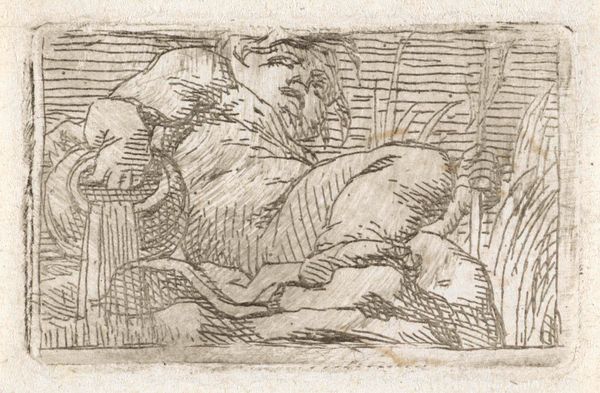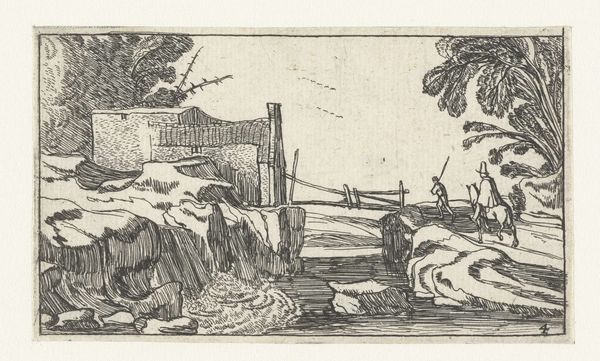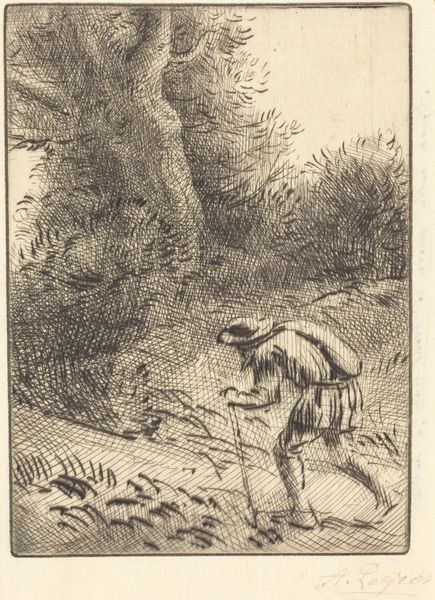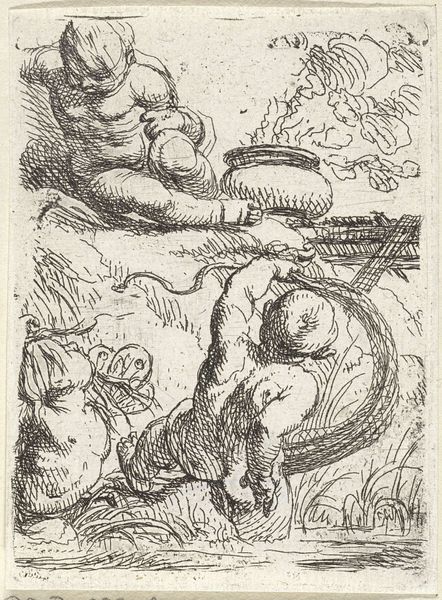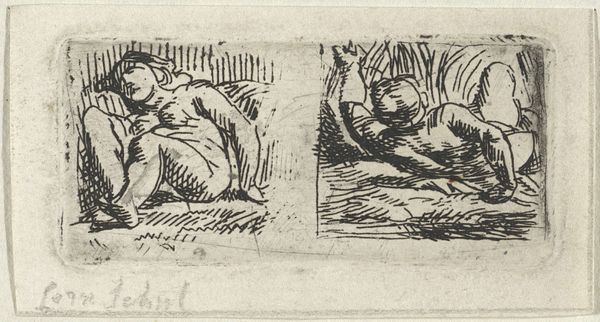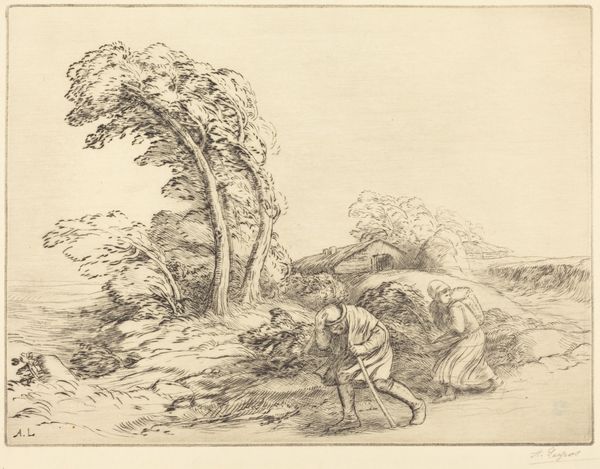
drawing, print, etching
#
drawing
#
baroque
# print
#
pen sketch
#
etching
#
pencil sketch
#
old engraving style
#
landscape
#
figuration
#
pen-ink sketch
#
genre-painting
Dimensions: height 36 mm, width 196 mm
Copyright: Rijks Museum: Open Domain
This is an etching, made by Cornelis Schut in the 17th century. It shows two sleeping children, along with an hourglass and a spinning top. Etching is a printmaking process that relies on acid to bite into a metal plate, allowing for the creation of an image through successive states. The physical character of an etching is defined by the incised lines, which give a distinctive texture. Schut likely used an iron needle to scratch away at a wax ground, before the plate was immersed in an acid bath. He would then have carefully printed it onto paper. In its time, printmaking was a powerful means of communication, and a commercial trade. By mastering it, artists like Schut were able to explore mortality and innocence, in this work, and also circulate their ideas widely. This challenges traditional notions of art as unique and precious. After all, it is the many impressions that give such a work its true value.
Comments
No comments
Be the first to comment and join the conversation on the ultimate creative platform.

